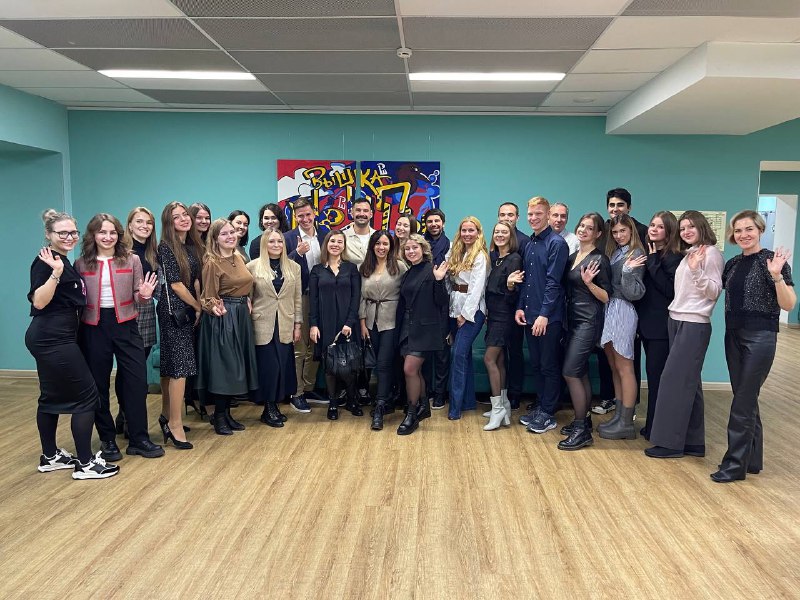HSE University-St Petersburg Students Made up a Portrait of a Luxury Brands Consumer for Cartier
For more than six months, HSE University-St Petersburg students have been studying the attitude of young people aged from 18 to 24 toward luxury brands. Guided by the lecturers of the Master's programme 'Arts and Culture Management', eight Master's students and three Bachelor's students conducted three large stages of research on the young audience: in-depth interview, survey and experiment. The research resulted in the portrait of the potential luxury brands consumer among the youth. Read more about the research results.

It is the second year that the Master's programme 'Arts and Culture Management' has been cooperating with Cartier. This project was the second one which had been implemented at the commission of this brand. The students were working on the project with the representatives of the jewellery house. Except for regular online meetings to discuss the project, in 2022, there were two offline events where the students presented the interim research results to the company's top managers, delivered poster presentations, and participated in workshops which were organised by the representatives of the Cartier office in Moscow. Some students of the programme undertook a summer internship at Cartier.
During the research, the students studied how young people aged 18 to 24 perceive luxury brands and what factors influence the youth's desire to buy expensive products. The first stage of the project was the in-depth interview. Based on 19 conversations, the students made up a portrait of a potential consumer of the luxury segment, defined young people’s views on the media space and navigation in it, and their perception of the luxury brands and the social agenda. It turned out that thinking about buying goods and services in the luxury segment, the young generation is guided by personal experience in the first place, quality and level of service, provided that they expect the latter to cause a 'wow effect'. These factors can become keys to building long-standing and solid relationships between a brand and its customers. In addition, the interviews showed that the luxe for the young generation is not just goods and services, but also style and way of life, even the inner feeling of a person.
Anna Kosiakova, 2nd-year student of the Master's programme 'Arts and Culture Management'
I liked that the Cartier team was open to our initiatives, sincerely interested in the research and gave us a lot of freedom. Moreover, it was important to the brand to see not just the results of our work, but the interpretation because we also are the representatives of the young generation. They asked a lot about our insights and perspective. We gained an experience in both carrying out research and communicating with a client, what's important, of a very high level. I believe that everyone has learned something useful, but for me personally, the most impressive thing was the way they immediately turned the insights into data-driven decisions. I was impressed that as soon as we put forward a proposal, they had an idea of how to implement it in business, promotion or customer service. Summing up, I like that they shared their expertise with us.
In the second stage of the research, they collected 364 application forms. Based on the received data, the students made up a detailed portrait of a potential luxury brand consumer taking into account their media habits, attitude to various public movements and perception of expensive goods. The survey showed that in the minds of zoomers, products of the luxury segment are not always hand-made or high-qualitative. For the youth, first of all, luxe is expensive things which bring joy and raise status, provided that not only rich people can have them.
Daria Kuzmicheva, 2nd-year student of the Master's programme 'Arts and Culture Management'
Working on the survey wasn't easy—we had to combine several rather different topics as well as choose questions in a way which wouldn't overload the respondents. As a result, we created a full database of answers, which would be helpful for Cartier as well as students who examine the topic of luxury brand consumption among the young audience.
It was interesting to find out that the youth's ideas of luxe are a little different from reality. For instance, only 13% of the respondents are sure that luxury goods are necessarily made with high quality, and only 10% believe that such goods are hand-made.
After working with Cartier, you will involuntarily raise your standards. This project was not just an invaluable professional experience, but also a reason to understand that everyone deserves the best in life. For example, you can buy rings from the collection 'Love', which are usually engagement ones, on an ordinary day as well.
Elena Zelenskaya, Academic Supervisor of the Master's programme 'Arts and Culture Management'

Working with the representative of Cartier on the joint projects is a great value and joy for us. The colleagues show, on the one hand, tenacity, clarity and business grasp, on the other hand, immense kindness and openness to interact with students. Our meetings are always held in a very warm, friendly atmosphere. We—both lecturers and students—constantly learn something new from our colleagues. For instance, focusing less on the validity of the approaches, methods, selection, and presentation of the received data and thinking more about interpretation, practical importance and useful insights. Sometimes one worthy insight may become a great result of a vast research project.
Except for interviews and surveys, which are traditional methods of collecting data for Cartier's marketing research, the students offered to experiment. This is how the project team tested the hypotheses about which attitudes influence the perception of a brand by a potential consumer.
During the first experiment 'Peer evaluation', the participants were told whether their peers evaluated the brand X negatively or positively. During the second experiment 'Sustainable development', the participants were informed about the initiatives of brand X related to care for the environment, wildlife protection, and the use of recycled materials in production. After that, the participants were asked to evaluate the statements related to brand X to understand how the attitudes influence the perception of the brand. In the third experiment 'Communication materials', the participants looked at the advertising campaigns and materials of Cartier and other luxury brands.
The experiments showed that for the youth, it is important to know the history of the brand and see the elements of its identity in the communication with a consumer. Moreover, the young generation positively evaluates the brands which contribute to care for the environment.
Victoria Fedosova, Director for Organisational Development at Cartier Russia and the CIS
Interacting with a young audience is very important for Cartier. We constantly open new angles of topics we're concerned with thanks to the young generation's point of view.
For the second consecutive year, we enjoy working with the students and lecturers of HSE University-St Petersburg. We are impressed by all the participants' high professionalism and emotional involvement in the project. We also would like to emphasise their mental flexibility and openness to feedback. The students show a responsible approach to the tasks and very organically become real ambassadors of the brand.
We congratulate the students and supervisors on finishing the large-scale research project, and we are eager to see their new initiatives.
The text by Daria Zabelina, a project participant

